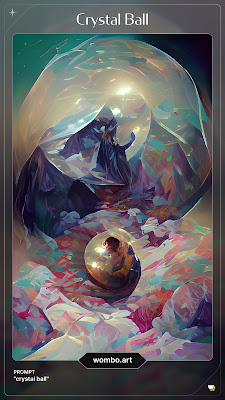Previously: Streamlining 5E’s Designs
As much as I don’t care for the fiddliness of 5E’s charged and per-day use magic items, I recognize their purpose. They're meat to serve as a fine-tuning dial, allowing more nuance than the very broad sweep of attunement and expendables.
So some items may benefit from further constraints or complications, beyond just the three buckets of attunement, expendability, and once-per-day use. What else can we do?
Let’s return to Electric Bastionland’s principles for oddities:
- One use only, disposable.
- Limited number of charges.
- Random chance of depletion on each use.
- Large and clunky, or even immobile.
- A creature instead of an object.
- Requiring a very specific uncommon input, such as a fresh corpse.
- Occupying a specific part of the body that can’t hold multiple things, like goggles, or gloves.
The middle three guidelines create some new space we can leverage. Below I've listed some thoughts on how we can use them, as well as a few more ideas inspired by the oddities.
Random Chance of Depletion
Similar to a usage die. Generally an improvement on charged items, because there’s no tracking – the chance of depletion always stays the same. Useful for items that have limited uses, but should feel unpredictable.
Large, Clunky, Immobile
Another good one. Think about the difference between finding a traditional crystal ball, as opposed to magical spring that simulates the same effect. The former is a useful magic item with few or no drawbacks. The latter is a resource that calls into question distance and time versus other priorities (“can we afford to visit the spring”?) invites resource trade-offs (“should we Teleport to visit the spring?”) and incentivizes downtime (“think of all the things we can scry if we spend a week at the spring”).
Creature (or Faction)
This can be useful too. Instead of a vial of Oil of Sharpness, how about a seed that grows into a Sword Palm, which produces a 1d2-2 fruit per month that can be drained for equivalent magic that must be used immediately? As with Large, Clunky, Immobile, by de-tool-ifying the magic item, we can incentivize downtime, base-building, and domain creation. Instead of a flying carpet, why not a whistle to signal aarakocra allies who can ferry characters from place to place – at the cost of faction intrigue? Or a temperamental flying mount? Removing the compactness and convenience of the inert item forces choices.
Fragile
Building on the Electric Bastionland list, I’ll add a few more ideas of my own.
I’m still experimenting with fragility. Fragile objects are somewhat like Random Chance of Depletion, except their termination isn’t tied to their use, but rather exposure to other conditions.
Consider again the classic crystal ball mentioned above. What if it was as fragile as a fine dining crystal? Even simple combats or environmental hazards become difficult for a PC carrying such an object. Keeping it safe at home – or bringing it into danger – is a legitimate choice.
The main drawback is the memory load; there has to be a trigger to remind the DM and/or the PC to check if the object breaks in situations where its in danger, but not actively in use.
Attracts Unwanted Attention
Another personal favorite. 5E has a few items like this, but could have more. For example, the Orb of Dragonkind requires a Charisma check; on a failure, it charms its user and can cast Suggestion at will. What does it suggest? Probably to use another one of the orb’s features and call dragons within 40 miles to the PC’s location. Uh-oh.
Cumulative Penalty or Cost
One way to simplify the rules baggage of a charge system is to simply convert the charges into another game currency already in use. An item that imposes a level of exhaustion has a clear and finite number of “charges,” insofar as characters can only take on so much exhaustion before dying. The same is true for hit points, ability score drain, and a dozen other things PCs already care about. Attack the character sheet.
Unpredictable or Uncertain Drawback
If the drawback isn’t cumulative, we should make it uncertain or hard to predict. Why? A fiendish battle axe that grants +2 to Strength and -2 to Wisdom is predictable. It’s a no-brainer for the barbarian who already chose Wisdom as a dump stat. A fiendish battle axe that grants +2 to Strength – but also disadvantage on Wisdom saving throws when fiends are nearby – is a different matter.
Should the PC use it all the time, or only selectively? What can the PCs learn about possible threats before raiding the dungeon -- how likely is it that demons dwell there? The PC has a risk/reward calculation to make, and an incentive to be careful and thoughtful about the in-game environment.
I have also used items with cumulative risk built in. For example, in my Gravestone Deep adventure, I included a magic item with the following clause: “Using [the item] more than once per day will result in a cumulative X-in-6 chance that [the devil] escapes, where X is equal to the number of attempts beyond the first.”
I don’t love this design, as it requires tracking the number of uses; but it definitely provides the push-your-luck aspect of play that I love.




No comments:
Post a Comment